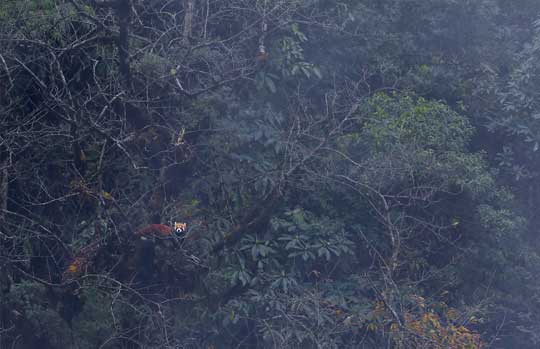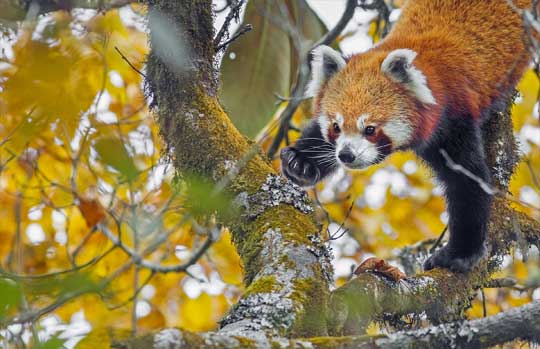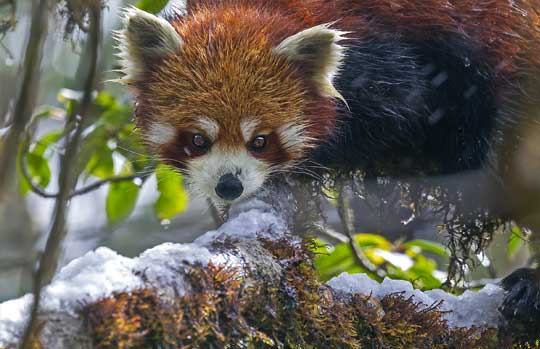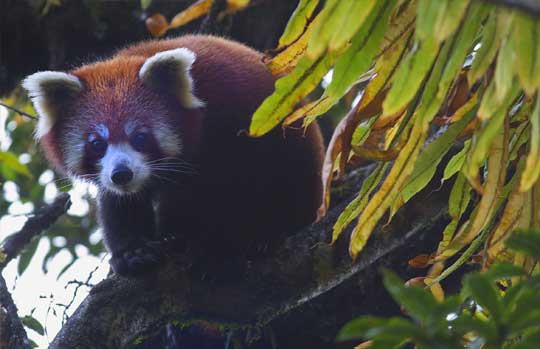Red Panda
The red Panda typically grow to the size of a house cat, though their big, bushy tails add 18 inches. The pandas use their ringed tails as wraparound blankets in the chilly mountain heights. Red Panda is the only real Panda; they belong to a family on their own and discovered years before Giant Panda. Today only less than 2500 panda remain in the wild. Red pandas have a taste for bamboo, but they eat many other foods as well—fruit, acorns, roots and eggs. Red Panda prefers to eat sitting on tree branches to avoid land predators. They sleep on trees and even lick water from the moss. Red Panda sleeps most of the day; however, they eat every 4-5 hours. Red Panda breeds in winter and females are receptive only for a day in a year. Red Panda tastes the air to sense danger, one similarity with the reptile. Red Pandas are solitary, other than breeding or mother with cubs.




